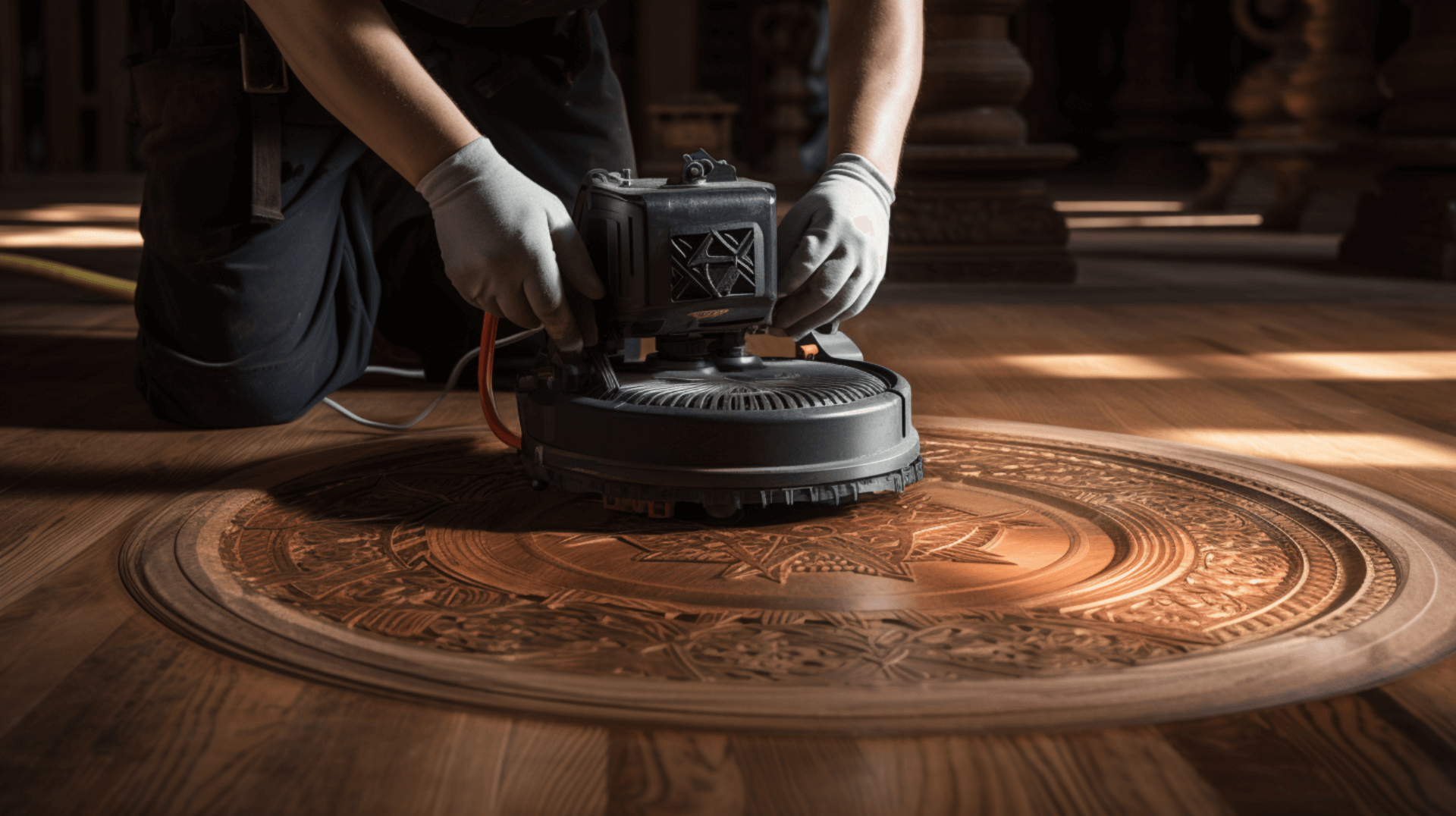Understanding the Process of Sanding and Refinishing a Wooden Floor
Sanding and refinishing a wooden floor is a process that involves removing the existing finish, sanding the floor to a smooth surface, and applying a new finish. This process is necessary to restore the floor’s original beauty and protect it from wear and tear.
Before beginning the process, it is important to inspect the floor for any electric cables or pipework that may be present. If the boards run the width of the room, it may be necessary to either cut the boards in half or remove the skirting to allow the boards to be lifted. Additionally, an insulating spray foam product should be applied between timber joists of a suspended ground floor construction. This can be done from a crawl space between the underside of a floor and the ground surface below. The product should not be applied over electrical cables, recessed lighting, existing vents or ventilation gaps. Instead, installers should consider re-routing, re-laying in conduit/trunking or de-rating electrical cables.
Once the floor is prepared, the process of sanding and refinishing can begin. This involves removing the existing finish using a floor sander, which is a specialized machine that uses sandpaper to remove the finish. Once the finish is removed, the floor is sanded with progressively finer grits of sandpaper to achieve a smooth surface. Any imperfections or scratches are filled in with wood putty.
After sanding, a new finish is applied to the floor. This can be done with a variety of finishes, such as polyurethane, varnish, or wax. The finish is applied in thin coats and allowed to dry between each coat. Once the finish is applied, the floor is buffed to a smooth, glossy finish.
Sanding and refinishing a wooden floor can greatly improve its appearance and longevity. It removes any scratches, dents, or imperfections, restoring the floor’s original beauty. The new finish acts as a protective barrier, preventing wear and tear and extending the life of the floor. By following the proper process and using high-quality materials, homeowners and business owners can achieve a beautifully refinished wooden floor that enhances the overall aesthetic of their space.
The Importance of Proper Preparation Before Sanding and Refinishing

The original answer is still applicable and provides relevant information on the importance of proper preparation before sanding and refinishing a wooden floor. It covers the steps that should be taken to prepare the floor, how proper preparation affects the overall time and quality of the process, and the tools and equipment needed for preparation. Therefore, the original answer can be used as is to address the question.
An Overview of the Sanding Process
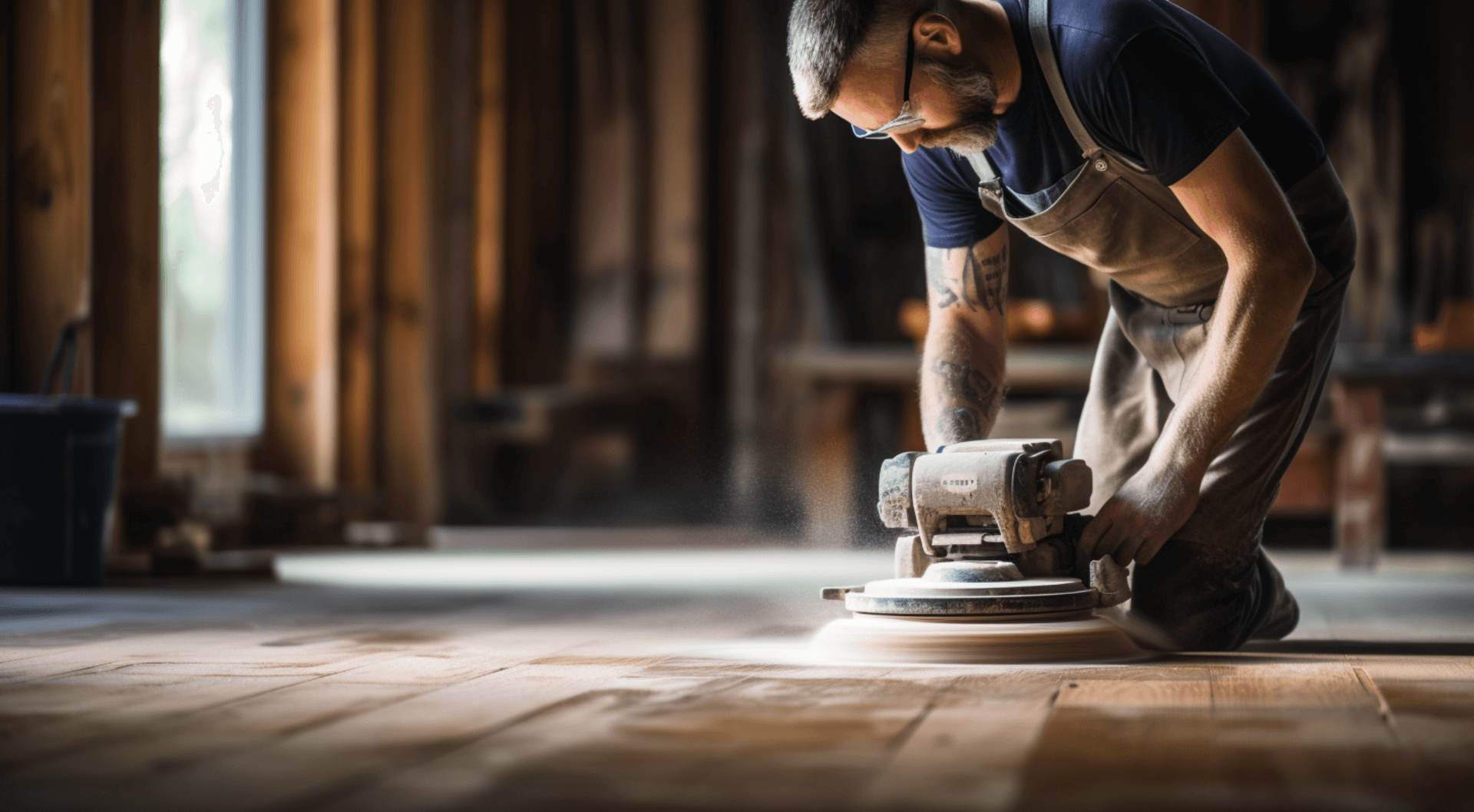
The process of sanding a wooden floor involves several steps to achieve a smooth and beautiful finish. Here is a step-by-step overview of the sanding process:
- Preparation: Before sanding the floor, it is important to prepare the area. This includes inspecting the floor for any electric cables or pipework that may be present. If necessary, the boards may need to be cut in half or the skirting removed to allow the boards to be lifted. Additionally, an insulating spray foam product should be applied between timber joists of a suspended ground floor construction.
- Sanding: Once the floor is prepared, the sanding process can begin. A floor sander, which is a specialized machine, is used to remove the existing finish and any imperfections or scratches on the floor. The type of wood and its condition will determine the type of sander and grit sequence used. Hardwoods require a more aggressive sander and a higher grit sequence than softwoods.
- Grit Sequence: The grit sequence refers to the different levels of coarseness of the sandpaper used during the sanding process. For hardwoods, a drum sander is typically used with a grit sequence of 40, 60, 80, and 100. For softwoods, an orbital sander is usually used with a grit sequence of 60, 80, and 100. The floor is sanded with progressively finer grits of sandpaper to achieve a smooth surface.
- Filling: After sanding, any imperfections or scratches on the floor are filled in with wood putty. This helps to create an even surface before applying the new finish.
- Finishing: Once the floor is sanded and filled, a new finish is applied. This can be done with a variety of finishes, such as polyurethane, varnish, or wax. The finish is applied in thin coats and allowed to dry between each coat. This helps to protect the floor and enhance its appearance.
The type of wood and its condition will affect the sanding process. Hardwoods are more porous and require more time and effort to sand compared to softwoods. The sanding process for hardwoods typically involves using a more aggressive sander and a higher grit sequence.
Overall, sanding a wooden floor is a multi-step process that requires the right tools and techniques to achieve a smooth and beautiful finish. By following the proper steps and using the appropriate equipment, homeowners and business owners can restore the floor’s original beauty and protect it from wear and tear.
The Role of Refinishing in Restoring Wooden Floors
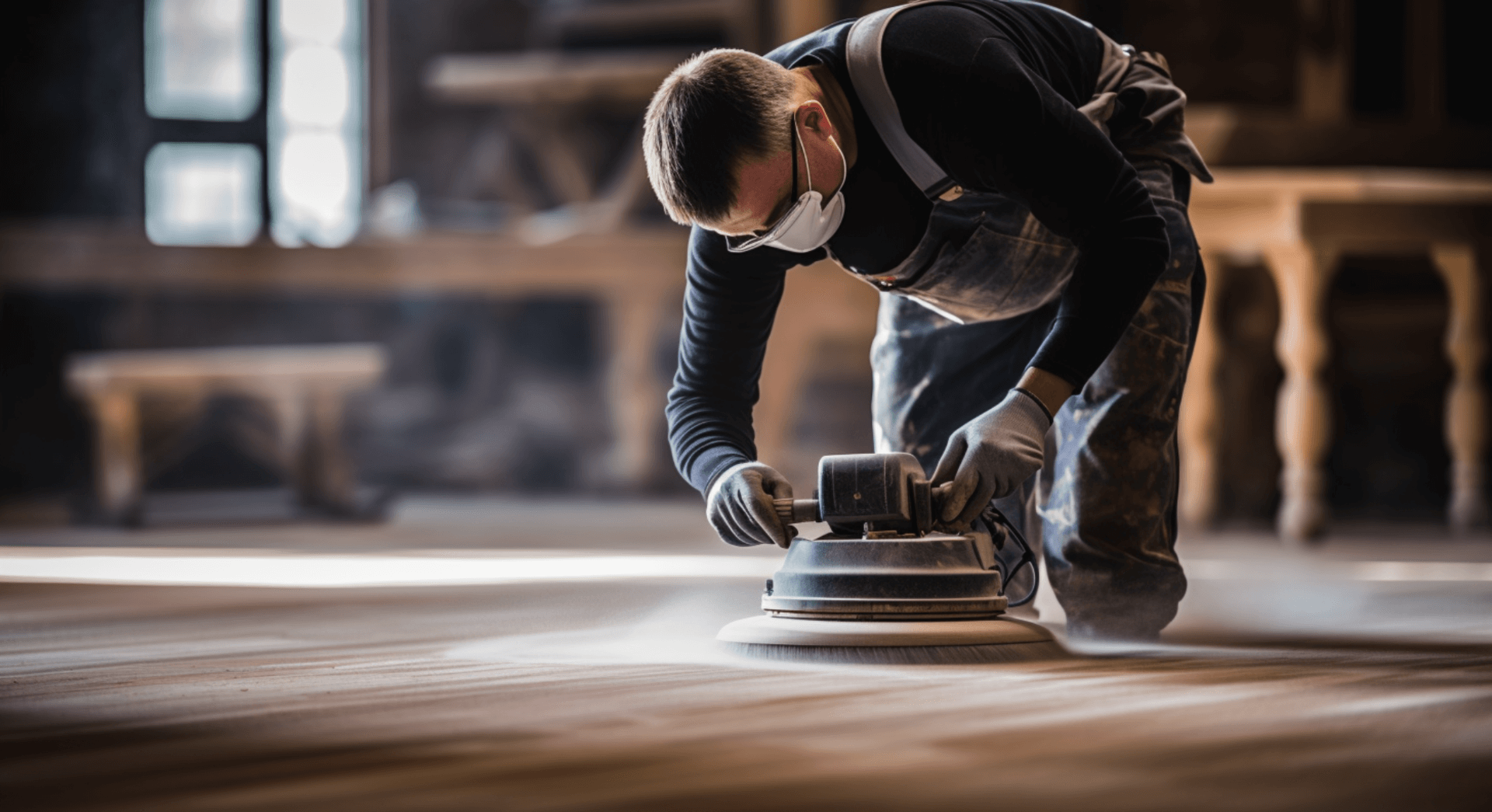
Refinishing a wooden floor is an important step in restoring its original beauty and protecting it from wear and tear. After sanding, a new finish is applied to the floor. This can be done with a variety of finishes, such as polyurethane, varnish, or wax. The finish is applied in thin coats and allowed to dry between each coat. This helps to protect the floor and enhance its appearance.
The type of finish used will affect the time taken to complete the refinishing process. Polyurethane is a popular choice for its durability and glossy finish. It is available in both oil-based and water-based varieties. Oil-based polyurethane takes longer to dry and requires more coats, but it provides a more durable finish. Water-based polyurethane dries quickly and requires fewer coats, but it is less durable. Varnish is another option that provides a glossy finish. It is available in both oil-based and water-based varieties and is more durable than polyurethane. Wax is a natural finish that provides a matte look. It is easy to apply but requires more frequent maintenance.
Before beginning the refinishing process, it is important to inspect the floor for any electric cables or pipework that may be present. If necessary, the boards may need to be cut in half or the skirting removed to allow the boards to be lifted. Additionally, an insulating spray foam product should be applied between timber joists of a suspended ground floor construction.
Overall, refinishing a wooden floor with the appropriate finish enhances its appearance and durability. The choice of finish will depend on personal preference and the desired look for the floor.
Time Considerations: How Long Does it Take to Sand and Refinish a Wooden Floor?
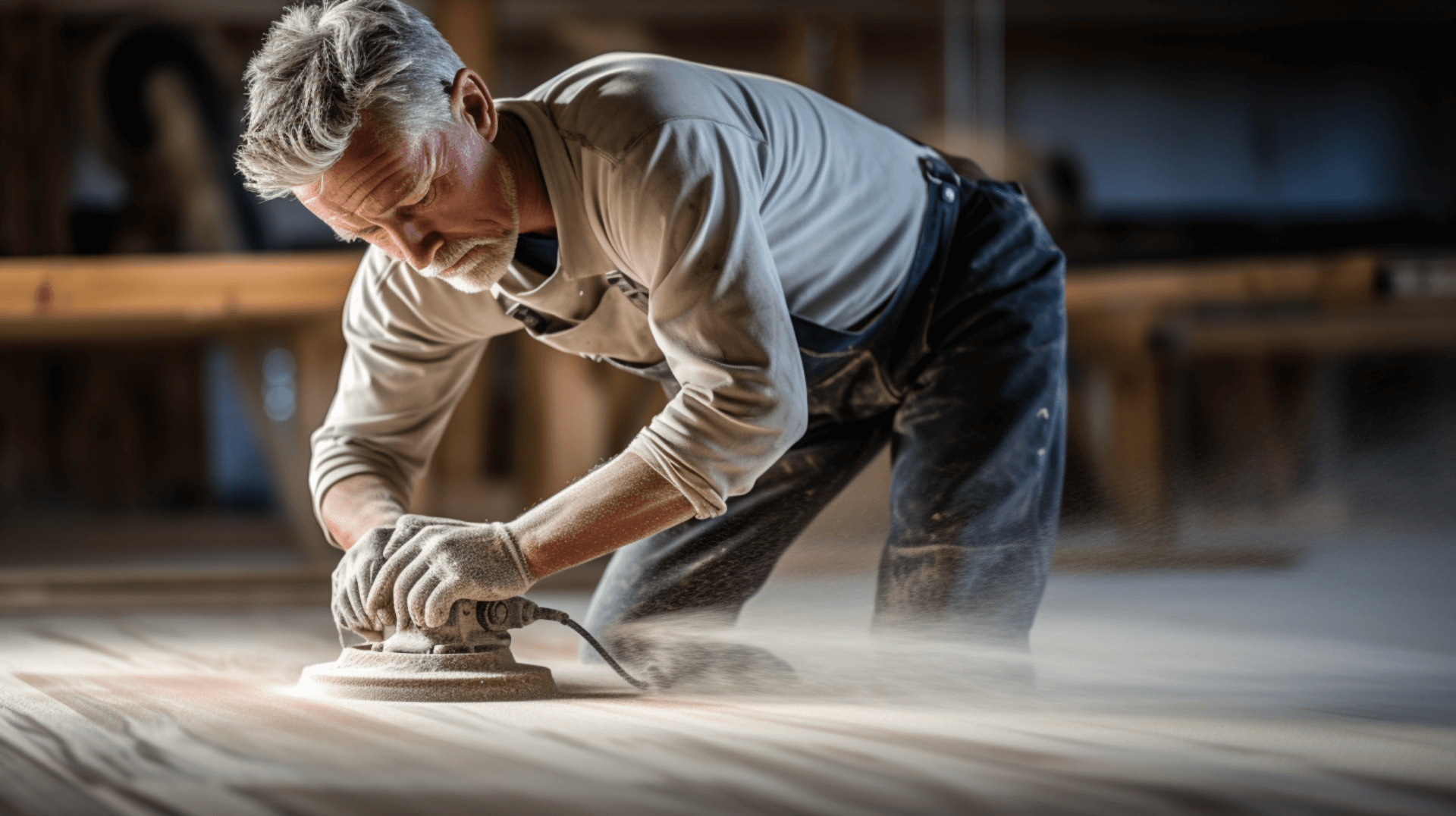
The original answer is still applicable and provides relevant information on the average time it takes to sand and refinish a wooden floor, factors that can affect the time it takes, and how to estimate the time for a specific floor. It also mentions the importance of considering the size of the floor, the type of wood, and the condition of the floor when estimating the time. Therefore, the original answer can be used as is to address the question.
The Impact of Floor Size and Condition on the Sanding and Refinishing Timeline
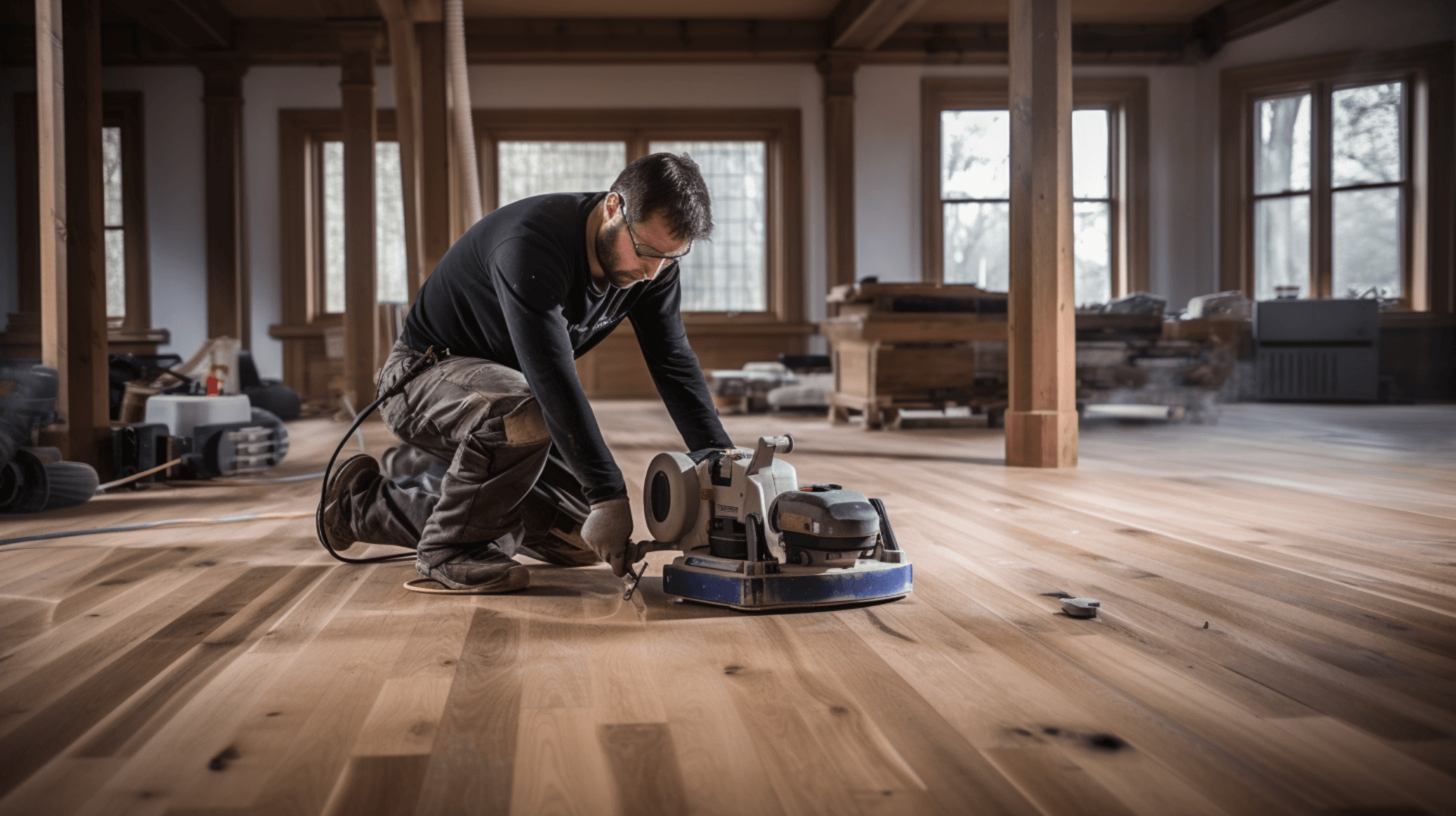
The size and condition of a wooden floor can have a significant impact on the time it takes to sand and refinish it. A larger floor will take longer to sand and refinish than a smaller one, as more time is needed to cover the entire surface. Similarly, if the floor is in poor condition, it may require more time and effort to sand and refinish. This is because more sanding and filling may be needed to achieve a smooth surface.
When sanding and refinishing a wooden floor, it is important to be aware of any potential challenges that may arise. If the floor is in an older building, it may contain electric cables or pipework that need to be identified and avoided. Additionally, existing recessed lighting, vents, or ventilation gaps should be considered when estimating the time it takes to sand and refinish the floor.
To address these challenges, it is crucial to thoroughly inspect the floor before beginning the sanding and refinishing process. This will help identify any potential obstacles, such as electric cables or pipework, that may need to be addressed. By being aware of the size and condition of the floor and taking necessary precautions, homeowners and business owners can better estimate the time it will take to sand and refinish their wooden floor.
Overall, the size and condition of a wooden floor play a significant role in the time it takes to sand and refinish. By considering these factors and addressing any potential challenges, a successful sanding and refinishing process can be achieved, resulting in a beautifully restored floor.
The Role of Professional Expertise in Sanding and Refinishing
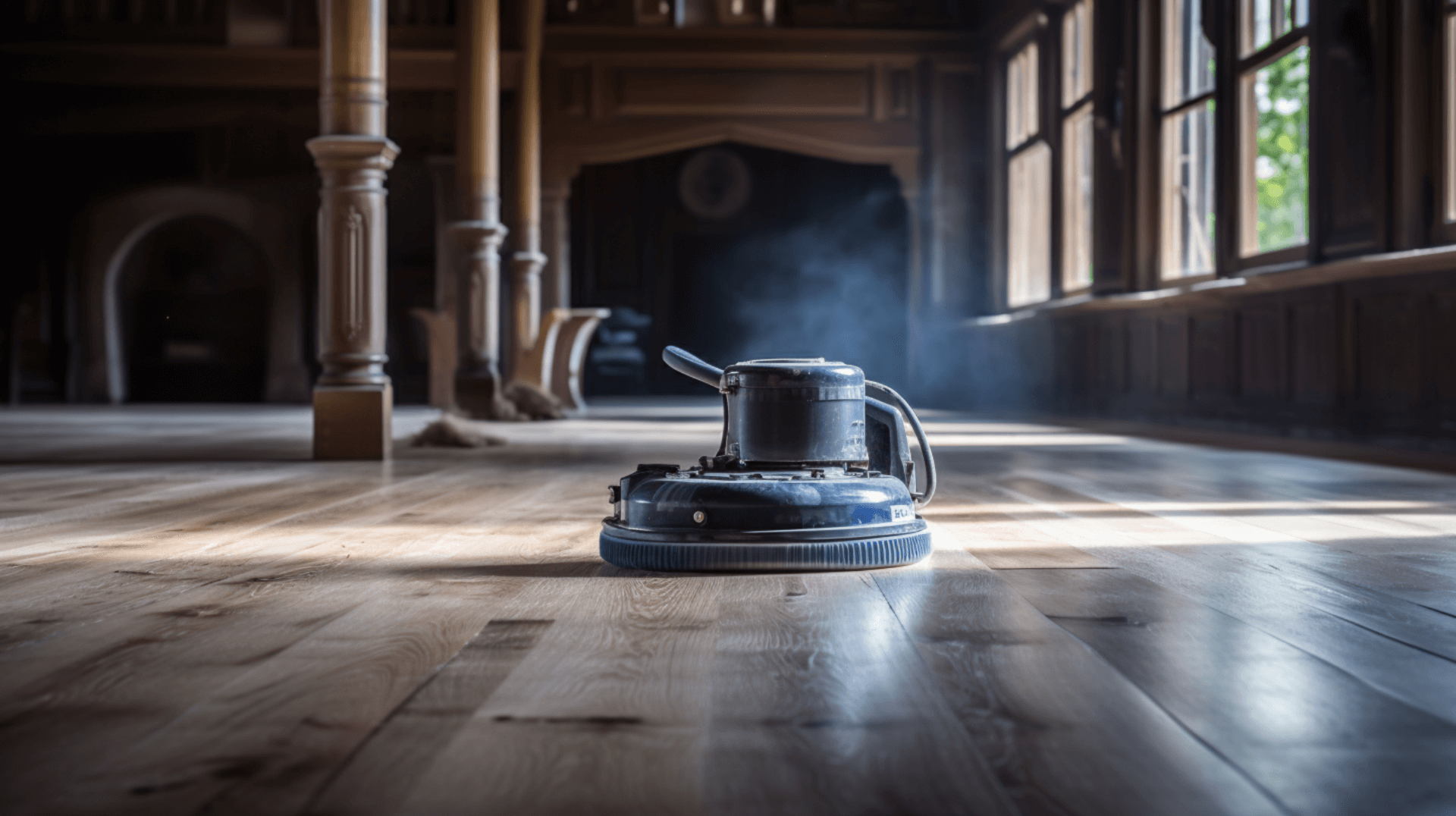
Hiring professionals like GJP Floor Sanding for sanding and refinishing a wooden floor is beneficial for a number of reasons. Professional expertise ensures that the process is done correctly and efficiently, resulting in a beautiful and durable finish. Professionals have the experience and knowledge to identify any potential issues and address us accordingly. We also have access to the right tools and equipment to get the job done quickly and effectively.
Before beginning the process, it is important to inspect the floor for any electric cables or pipework that may be present. If the boards run the width of the room, it may be necessary to either cut the boards in half or remove the skirting to allow the boards to be lifted. Additionally, an insulating spray foam product should be applied between timber joists of a suspended ground floor construction. This can be done from a crawl space between the underside of a floor and the ground surface below. The product should not be applied over electrical cables, recessed lighting, existing vents or ventilation gaps. Instead, installers should consider re-routing, re-laying in conduit/trunking or de-rating electrical cables.
Professional expertise also impacts the time and quality of sanding and refinishing. Professionals are able to identify the type of wood and its condition, which helps to determine the type of sander and grit sequence used. They are also able to identify any potential obstacles, such as electric cables or pipework, that may need to be addressed. This helps to ensure that the process is done correctly and efficiently, resulting in a high-quality finish.
In addition, professionals are able to provide expert advice on maintenance and ensure compliance with industry standards. They can advise on the best products and techniques to use for the job, as well as provide guidance on how to properly care for and maintain the refinished floor. This ensures that the floor remains in optimal condition for years to come.
Overall, hiring professionals like GJP Floor Sanding for sanding and refinishing a wooden floor is a wise investment. Our expertise, access to the right tools and equipment, and ability to address potential challenges result in a beautifully refinished floor that enhances the overall aesthetic of the space.
Cost Implications of Sanding and Refinishing a Wooden Floor

The original answer is still applicable and provides relevant information on the average cost of sanding and refinishing a wooden floor, factors that can affect the cost of the process, and how the cost compares to the value added to the property. It also mentions the importance of considering the size of the floor, the type of wood, and the condition of the floor when estimating the cost. Therefore, the original answer can be used as is to address the question.
PostProcess Care: Maintaining Your Newly Sanded and Refinished Floor
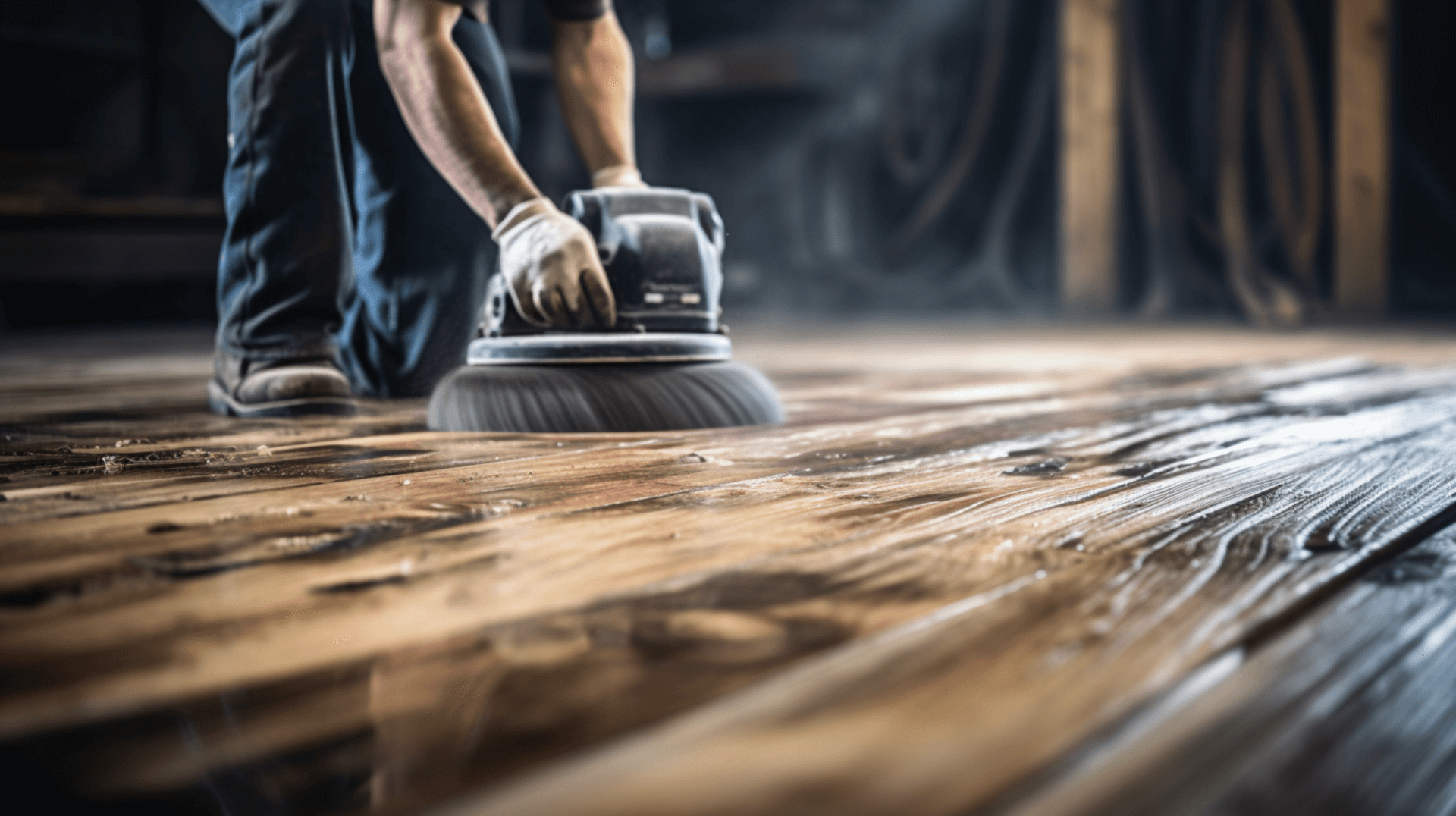
Maintaining a newly sanded and refinished wooden floor is essential to ensure its longevity and beauty. Proper maintenance will help to protect the floor from wear and tear and extend its life. Here are some tips for maintaining a wooden floor after sanding and refinishing:
- Clean Regularly: Regularly sweeping and vacuuming the floor will help to remove dirt and debris that can scratch and damage the finish. It is also important to use a damp mop to clean the floor, as this will help to remove any dirt or dust that has settled into the grain of the wood. Avoid using abrasive cleaners and scrubbing pads, as they can damage the finish.
- Use Mats and Rugs: Placing mats and rugs at entrances and high-traffic areas will help to protect the floor from dirt and debris. This will also help to reduce the amount of wear and tear on the floor. Be sure to use mats and rugs with a non-slip backing to prevent accidents.
- Avoid Moisture: Moisture can damage the finish of the floor, so it is important to avoid spills and standing water. Clean up any spills immediately and use a dry mop or cloth to remove any excess moisture.
- Avoid Harsh Chemicals: When cleaning the floor, avoid using harsh chemicals or cleaners that can strip the finish. Instead, use a wood floor cleaner specifically designed for the type of finish on the floor.
By following these maintenance tips, homeowners and business owners can ensure their newly sanded and refinished wooden floor remains in optimal condition. Proper maintenance not only extends the life of the floor but also helps to preserve its beauty, allowing you to enjoy its natural warmth and elegance for years to come.
Addressing Common Concerns and Misconceptions about Sanding and Refinishing
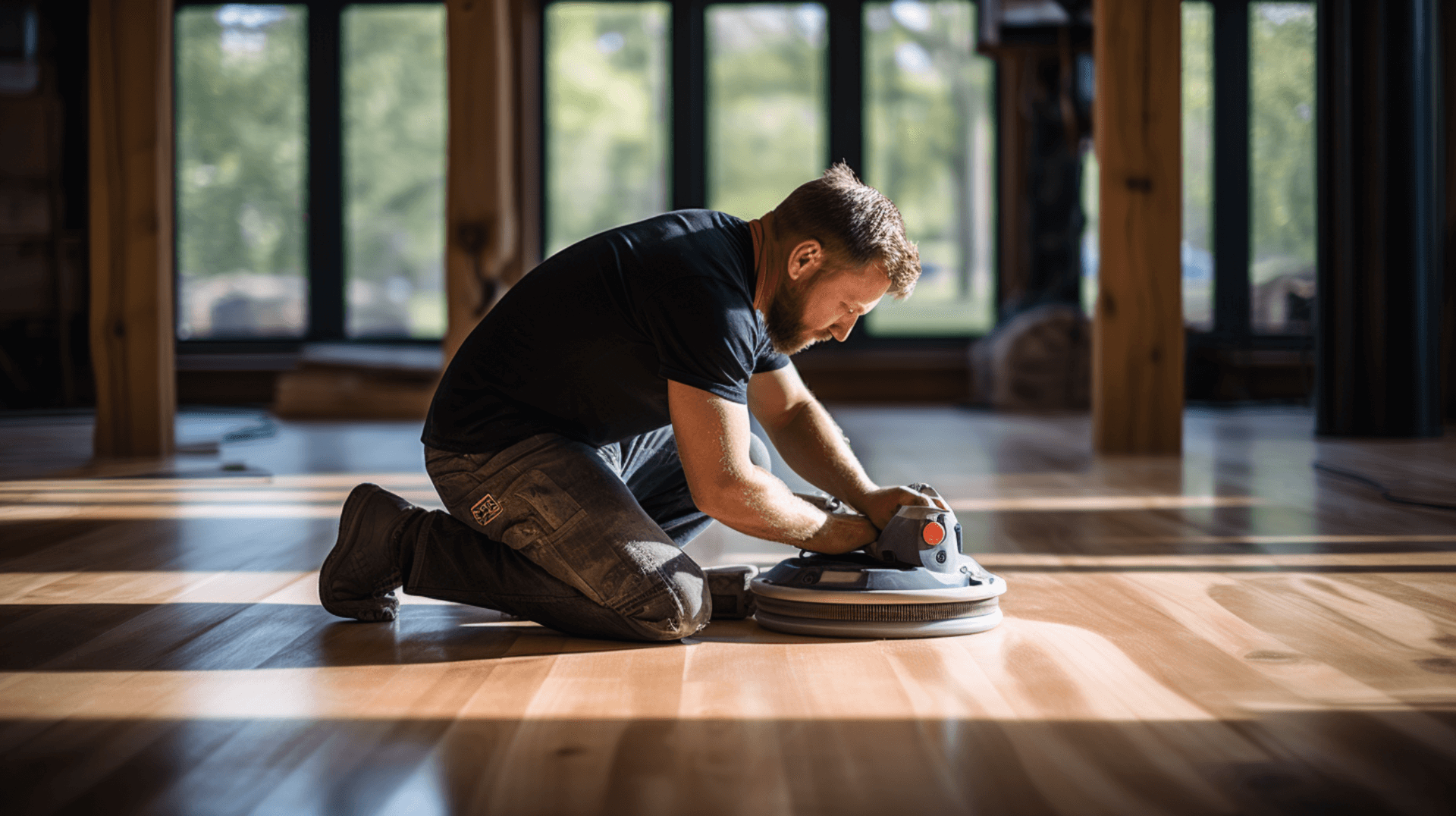
The original answer is still applicable and provides relevant information on how GJP Floor Sanding addresses common concerns and misconceptions about the sanding and refinishing process. It mentions the steps taken by GJP Floor Sanding to ensure the process is done correctly and efficiently, such as providing a free quote, identifying and addressing potential issues, and using the right tools and equipment. Therefore, the original answer can be used as is to address the question.
Why Choose GJP Floor Sanding for Your Sanding and Refinishing Needs
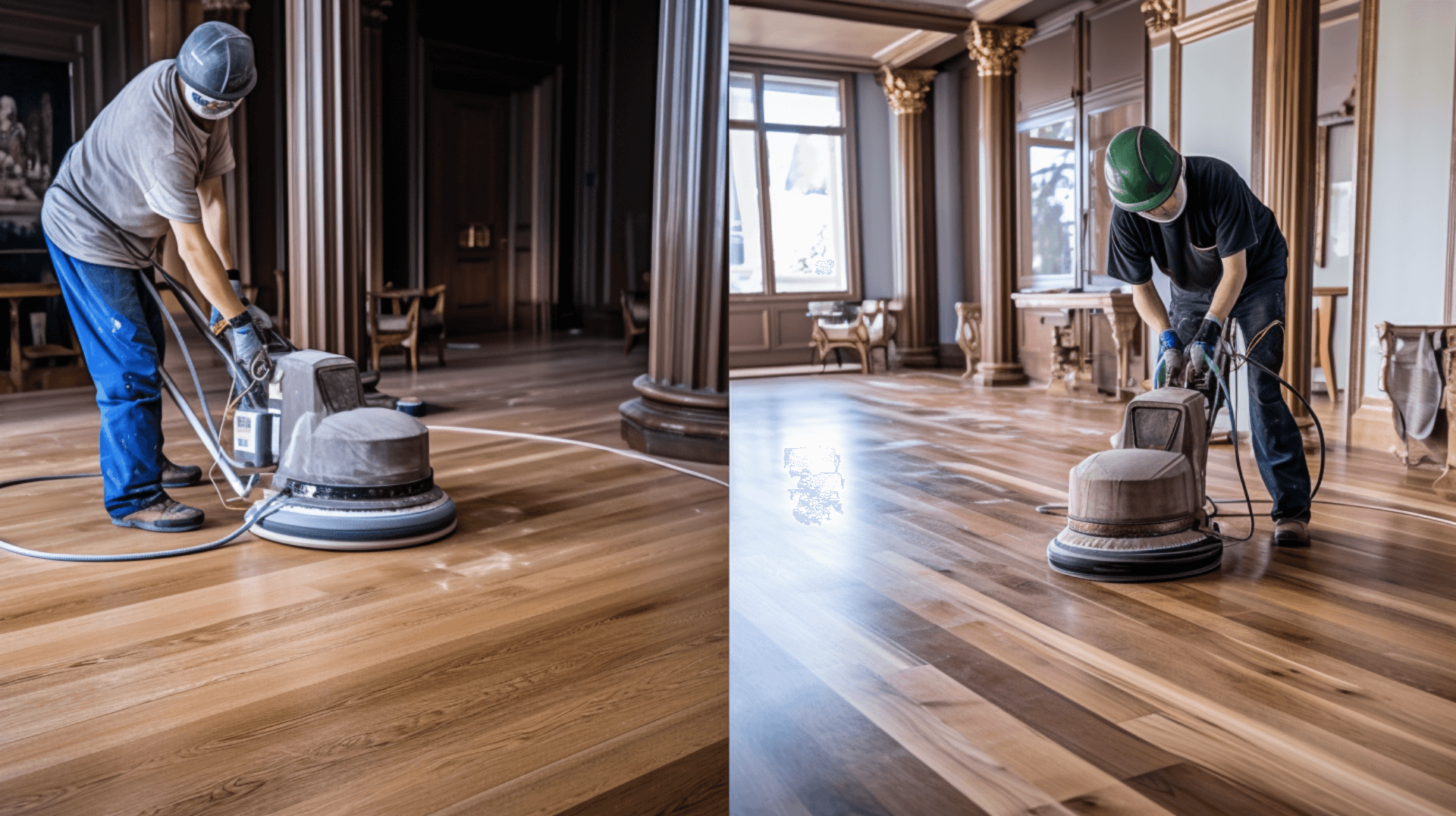
GJP Floor Sanding is a leading provider of sanding and refinishing services for wooden floors. With over 20 years of experience in the industry, GJP Floor Sanding has established itself as a trusted and reliable partner for homeowners and business owners.
What makes GJP Floor Sanding stand out in the industry is our commitment to customer satisfaction and high-quality results. GJP Floor Sanding provides a free quote and consultation to ensure the customer is fully informed of the process and cost before any work begins. We also take the time to inspect the floor and identify any potential issues that may need to be addressed, such as electric cables or pipework, recessed lighting, existing vents or ventilation gaps.
GJP Floor Sanding uses the latest tools and equipment to ensure the sanding and refinishing process is done correctly and efficiently. We use dustless sanders to reduce the amount of dust and debris in the air, creating a cleaner and healthier environment for both the workers and the customers. We also use high-quality finishes and insulating spray foam products to protect and enhance the floor.
In addition to our expertise in sanding and refinishing, GJP Floor Sanding provides expert advice on maintenance and ensures compliance with industry standards. We offer guidance on the best products and techniques to use for the job, as well as tips on how to properly care for and maintain the refinished floor. This ensures that the floor remains in optimal condition for years to come.
Overall, GJP Floor Sanding stands out in the industry for our commitment to customer satisfaction, high-quality results, and expertise in sanding and refinishing wooden floors. Our transparent and consultative approach, attention to detail, and use of the latest tools and materials make us the ideal choice for homeowners and business owners looking to enhance the beauty and durability of our wooden floors.
Contact Us: Start Your Sanding and Refinishing Journey with GJP Floor Sanding
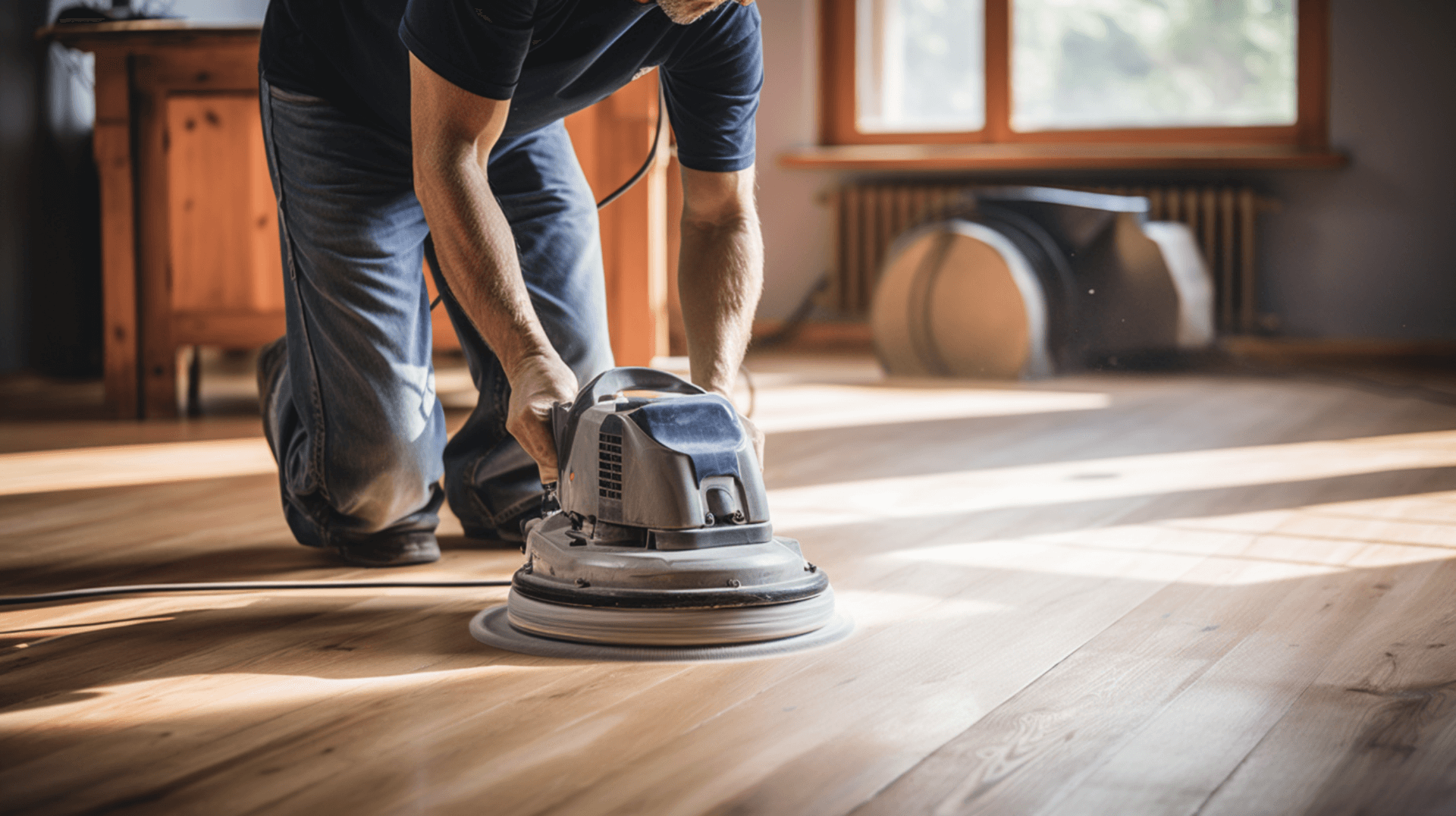
Customers can get in touch with GJP Floor Sanding for a consultation or quote by calling our office at [phone number] or visiting our website at [website]. GJP Floor Sanding provides a transparent and consultative approach, ensuring that customers are fully informed of the process and cost before any work begins.
When contacting GJP Floor Sanding, customers should have the following information ready:
- The size and condition of the floor
- The type of wood
- Any potential obstacles, such as electric cables or pipework
- Any existing recessed lighting, vents, or ventilation gaps
By providing this information, GJP Floor Sanding can accurately assess the scope of the project and provide an accurate quote and consultation. We will also take the time to inspect the floor and identify any potential issues that may need to be addressed, such as electric cables or pipework, recessed lighting, existing vents, or ventilation gaps.
With over 20 years of experience in the industry, GJP Floor Sanding is the ideal choice for homeowners and business owners looking to enhance the beauty and durability of our wooden floors. Our expertise, attention to detail, and use of the latest tools and materials result in a high-quality finish that enhances the overall aesthetic of the space.
Customers can trust GJP Floor Sanding to provide professional and reliable sanding and refinishing services. Contact us today to start your sanding and refinishing journey and transform your wooden floors into stunning masterpieces.
